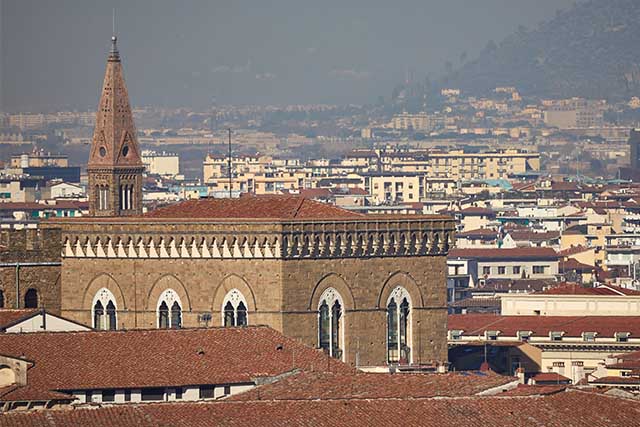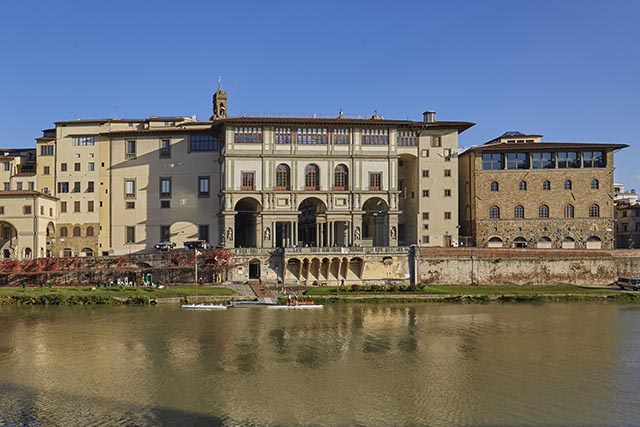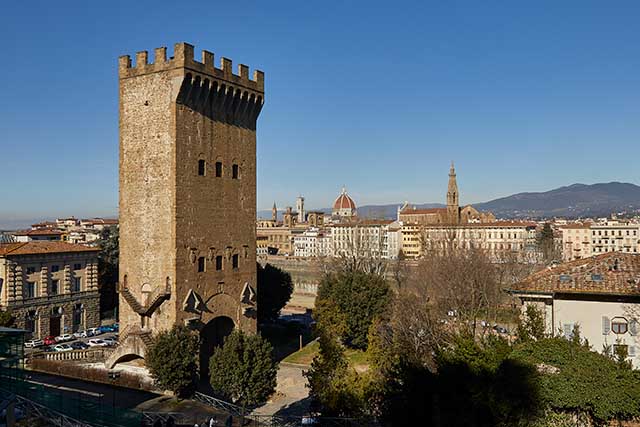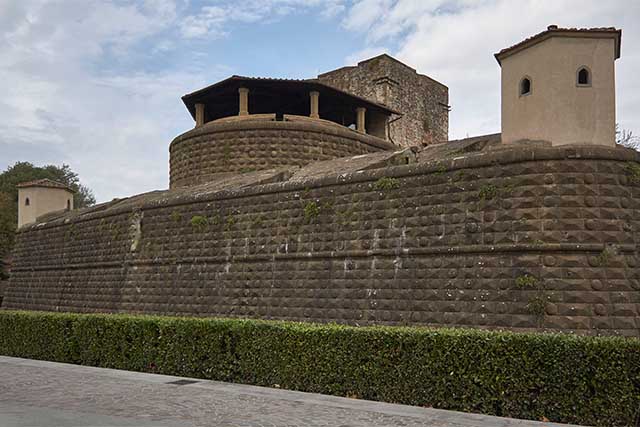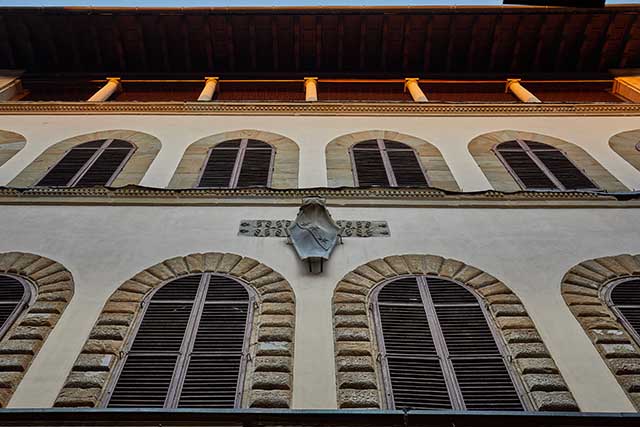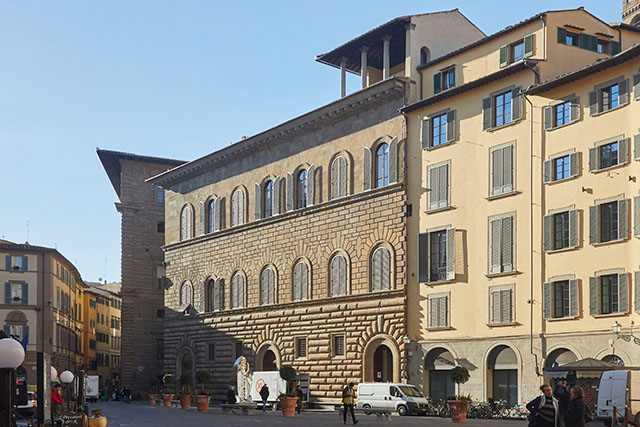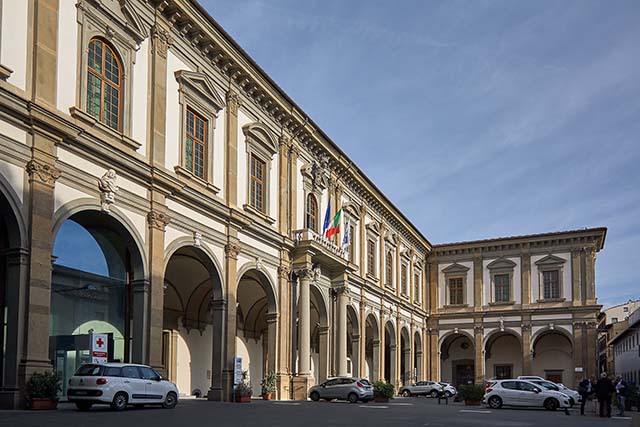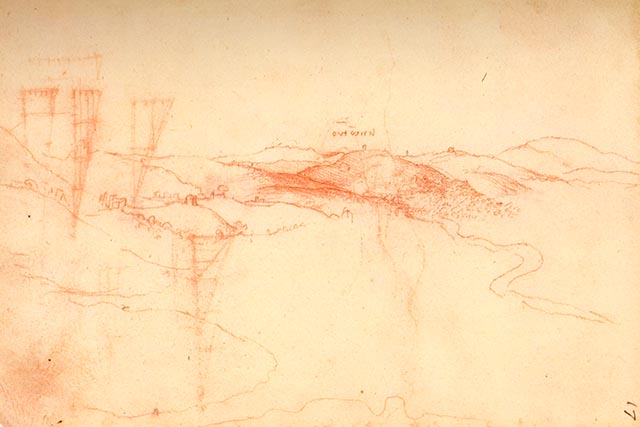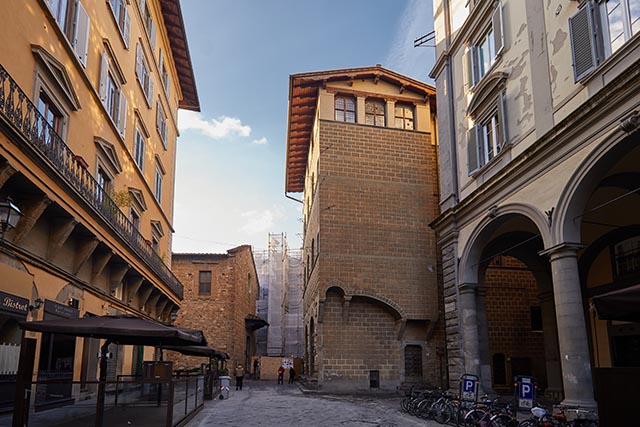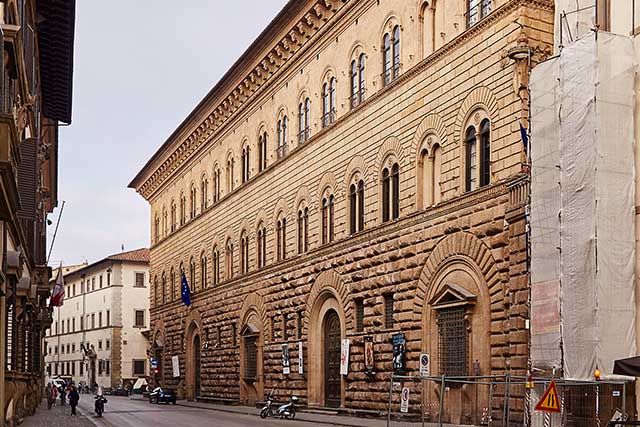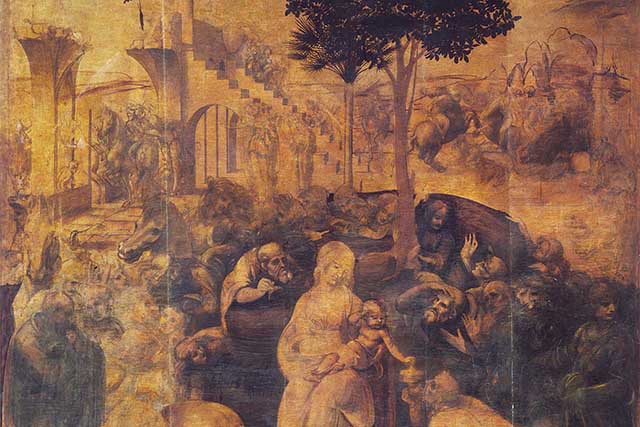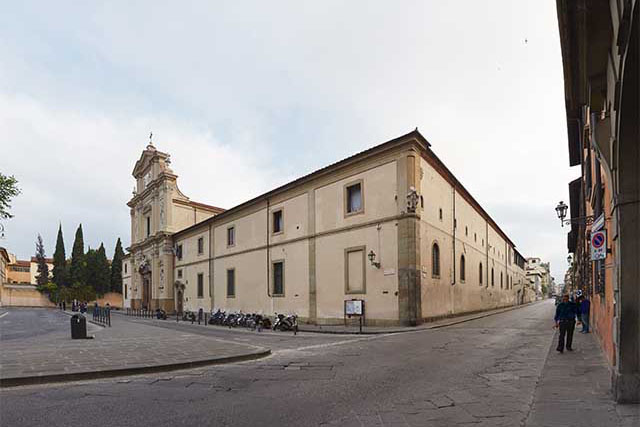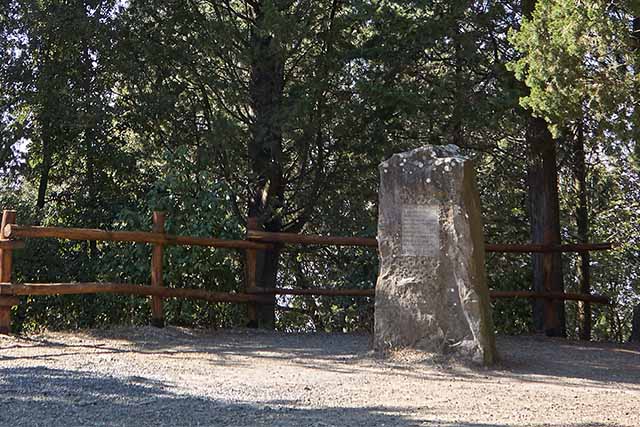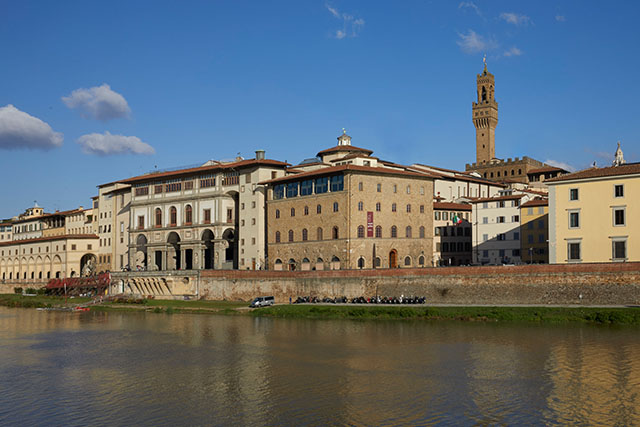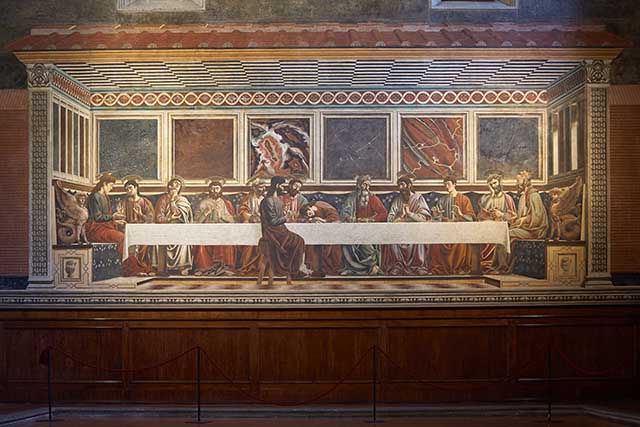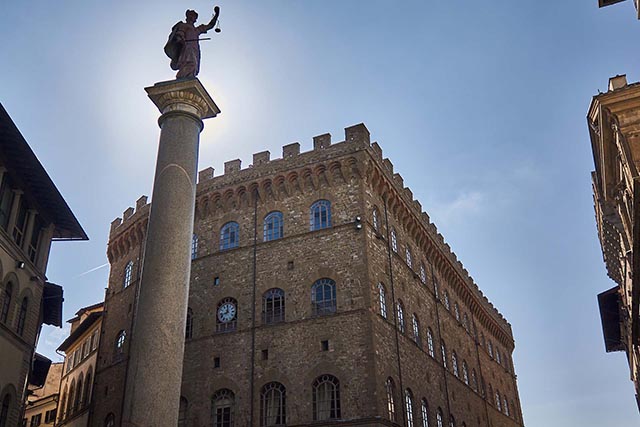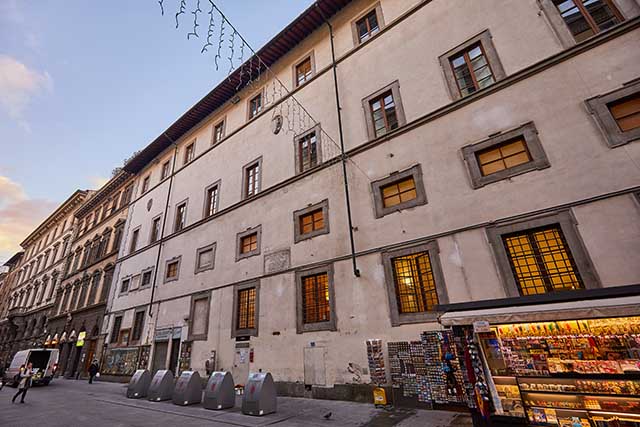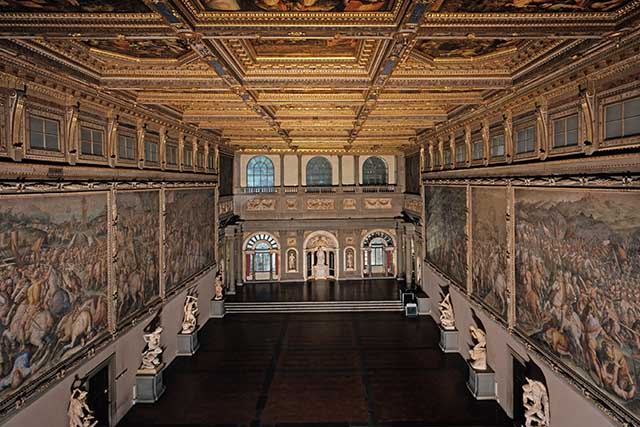Places in the Florentine area
Filter/Filtra
Works of the circle and of Leonardo's workshop and school are found in the Galleria Palatina at the Palazzo Pitti, in the Museo Horne, in Palazzo Vecchio and in the Museo del Bigallo. In other Florentine museums, palaces and churches are works of fundamental importance for reconstructing the artistic and cultural context of Leonardo's time. In the Museo Nazionale del Bargello, for instance, are displayed works by Verrocchio in which the participation of Leonardo, or an iconography of his, has been suggested. Works of applied art with documentary or iconographical references to Leonardo are found in the Tesoro dei Granduchi (former Museo degli Argenti) and in the Museo Stibbert.
In the new suggestive Room 35 of the Uffizi Gallery, dedicated to Leonardo, there are three famous works: the Annunciation, the Baptism and the Adoration of the Magi, last work of his first Florentine period. In the Uffizi's Cabinet of Drawings and Prints, several drawings and sketches by Leonardo are found (visible only with special permission or on the occasion of exhibitions); other drawings are attributable either to the Florentine Leonardesque school or to the Milanese circle.
Clockwise, starting from the course of the Arno, upstream of Florence, Leonardo indicates on RL 12681 (Windsor Castle), which represents in a schematized form the second city wall of the communal age, 5 doors still existing on the left bank of the Arno.
Proceeding along the right bank of the Arno Leonardo draws along the city walls, other 5 doors in addition to the "Porticciola del Prato di Ognissanti" marked on the river. Only 3 of these doors have been preserved until today
A memorandum by Leonardo in the Codex Atlanticus refers to Pier Francesco of the Ginori family, whose palazzo stands in the street of the same name. Among the family members we may recall Gabriello Ginori, who was Podestà of Milan when Leonardo too was in the capital city of the Sforza duke. In the 18th century the Ginori descendants founded the famous porcelain factory at Doccia.
SSer Piero lived until 1480 in Via delle Prestanze, enlarged in the 19th century by the implementation of Poggi's projects for Florence as capital of Italy, and forming the present-day Via dei Gondi. The building belonged to the Arte dei Mercatanti who sold it in 1485 to Giuliano Gondi, who already owned the adjoining house. After the building was demolished, Giuliano da Sangallo built the current Palazzo Gondi, where an inscription recalls the presence of Leonardo. It is interesting to note that Leonardo mentions in the Codex Atlanticus (f. 1024v), among his other friends, Giuliano Gondi.
Leonardo's relations with the "Spedale" of Santa Maria Nuova are documented at various moments during his entire lifetime. Here he conducted anatomical studies, he deposited cases of printed books, manuscripts and albums of drawings, and here he had also his bank. Before leaving for Milan in 1506, he left 150 florins that were to serve as guarantee to the Florentine Signoria that he would return to the city within three months. Leonardo did not return to Florence in time, and the Signoria confiscated the money. A tradition, which has turned out to be more legend than documented history, tells of two great stone basins situated in the undercroft of the Hospital and used for the cadavers studied by Leonardo.
On foglio 17r in the Codex Madrid II is a sketch by Leonardo of the hills of Florence around Villamagna. One peak is labeled “L’Incontro”.
In the 18th century a Franciscan monastery stood on this panoramic site overlooking Florence and the Valdarno from a height of 559 metres.
Ser Piero had several houses in Florence: it is possible to follow the itinerary in the heart of the historical center, starting from the first house where his presence is documented, in Borgo dei Greci, to get to the last one, in via Ghibellina, where he died.
Ser Piero already had close relations with the Medici family, with whom his son Leonardo had an important relationship in two periods of his life. The artist attended the Garden of Lorenzo the Magnificent, who sent him to Milan in 1482 to donate a silver lyre to Ludovico il Moro. In 1512 the Medici returned to Florence, Giovanni was elected Pope with the name of Leo X and Leonardo went to Rome with Giuliano, commissioner of the Gioconda. He studied a new Medici palace opposite Palazzo Medici Riccardi and a rearrangement of the surrounding quarter. He also designed the Medicean Stalls.
The Monastery with its church was situated just outside the walls of Florence, in the vicinity of Porta Romana: the monastery was bought by the Augustinians in 1420. Ser Piero Da Vinci, Leonardo's father, was their notary. For them Leonardo began, in 1481, the great panel of the Adoration of the Magi, which he left unfinished. Today the painting is in the Uffizi.
Leonardo frequently refers to San Marco, one of the major centres of Florentine cultural and religious life. f notable importance in relation to Leonardo's Last Supper in Milan is the fresco of the same subject painted by Ghirlandaio in this monastery.
Leonardo recalls Monte Ceceri and Fiesole in his Codex on the Flight of Birds: first for having sighted there a cortone "bird of prey", and again for his prophecy on human flight from Monte Ceceri. Legend has it that one of his followers, Zoroastro from Peretola, tried to fly from Monte Ceceri, but the attempt ended in a disastrous fall. Leonardo's first drawing of a flying machine dates from his first Florentine period, around 1480.
The Museo Galileo has a collection of original scientific instruments dating to the period of Leonardo da Vinci, a complete collection of the artist’s codices in facsimile, as well as an ample collection of bibliographic material on his work. The institute is also the seat of the Commissione vinciana and has supported the realization of numerous events designed to explore and celebrate the genius of Leonardo and his role in technological progress over the past five centuries.
An original Florentine itinerary that presents the most immediate iconographic precedents to the Last Supper painted by Leonardo, is the one that unfolds along the city's fifteenth-century Last Suppers, such as those of Andrea del Castagno (Santa Apollonia), Perugino (Fuligno), Domenico Ghirlandaio (San Marco and Ognissanti), and Andrea del Sarto (San Salvi).
The Anonymous Gaddiano recalls the quarrel between Leonardo and Michelangelo that took place in front of the palace. This building was purchased in the 17th century by Marchese Feroni (whose family came from Vinci) and is today the seat of the Ferragamo Museum.
On March 22, 1508, at the end of what is considered Leonardo's second stay in Florence, he lived in via degli Spadai (today's via Martelli), «in the house of Piero di Braccio Martelli», together with the sculptor Giovan Francesco Rustici, whom he assisted in sculpting three bronze statues to adorn the outside of the Baptistery (the Preaching of St . John). In this Palace, later encapsulated in the Scolopi boarding school, Leonardo began to compile a part of the Codex Arundel.
In 1478 Leonardo had been commissioned to paint an altarpiece representing The Vision of St. Bernard for the chapel of San Bernardo in Palazzo della Signoria, but he did not finish the work. It was Filippino Lippi who finished the painting, that became through a succession of iconographic transformations, a Virgin enthroned with four saints and two angels (now in the Uffizi). In 1503 Leonardo was commissioned to paint, for the Great Council Hall in Palazzo della Signoria, a grandiose wall painting representing the Battle of Anghiari. Plans called for another great painting on the opposite wall, a Battle of Cascina for which Michelangelo was chosen.




